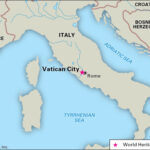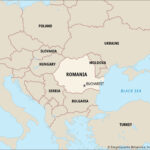For many, the term FYROM might sound unfamiliar or even perplexing. FYROM, an acronym for the Former Yugoslav Republic of Macedonia, was once the provisional name for a country nestled in the heart of the Balkans. To understand where FYROM was and what it is now, we need to delve into the rich and often complex history of this nation, which today is known as the Republic of North Macedonia.
A Historical Tapestry: From Ancient Kingdoms to Ottoman Rule
The land that is now North Macedonia is steeped in history, serving as a crossroads of civilizations for millennia. For over 10,000 years, this region has been a cradle for various ancient cultures, including the earliest European Neolithic farmers and the powerful Ancient Macedonians. It was also home to Paeonians, Illyrians, and Thracians, each leaving their mark on the landscape and culture. In the 4th century BC, Philip II of Macedon, a figure of immense historical significance, conquered the entire region. This marked the beginning of the Macedonian Kingdom’s dominance, which lasted until the Roman conquest in 145 BC. Under Roman rule, Macedonia became a Roman province, further integrating it into the wider Mediterranean world.
Following the division of the Roman Empire in 395 AD, the region became part of the Eastern Roman Empire, later known as the Byzantine Empire. This era saw both prosperity and turmoil. Between the 4th and 6th centuries AD, Roman Macedonia experienced invasions from Goths, Huns, and Avars, impacting both rural areas and affluent cities.
The 7th century AD witnessed a significant cultural and ethnic shift with the arrival of Slavic tribes. Their settlement and eventual dominance profoundly altered the region. By the 9th century, this area was incorporated into the expanding Bulgarian Empire. Ohrid, a city of great historical and cultural importance, rose to prominence in the 970s, becoming the capital of the First Bulgarian Empire after Byzantine and Russian incursions devastated eastern Bulgaria. Even today, Ohrid holds immense significance as a religious and cultural center for the Slavic world. However, Byzantine control was re-established in 1018, leading to a period of fluctuating power as Macedonia passed between Byzantium, Bulgaria, and Serbia. The late 14th century marked another turning point as Macedonia became part of the vast Ottoman Empire, ushering in a new era of cultural transformation.
Modern Macedonia: Independence and the Name Dispute
The modern history of North Macedonia is intertwined with the decline of the Ottoman Empire and the rise of Balkan nationalism. After Russia’s victory over the Ottomans, the Treaty of San Stefano in 1878 initially ceded North Macedonia to Bulgaria. However, fearing Russian influence in the Balkans, the Great Powers intervened, forcing Bulgaria to return North Macedonia to Ottoman control. This decision ignited the Macedonian struggle for independence, culminating in the Ilinden Uprising of 1903, which, despite its valiant effort, was brutally suppressed by Ottoman forces.
The First Balkan War in 1912 saw Bulgaria, Greece, Serbia, and Montenegro unite to liberate the remaining Ottoman territories in the Balkans. While they were successful in defeating the Ottomans, disagreements among the allies led to the Second Balkan War in 1913. Greece and Serbia expelled Bulgaria and divided much of North Macedonia between themselves. Bulgaria, still hoping to unify Macedonia, sided with the Central Powers in World War I (1915-1918) and later with the Axis powers in World War II (1940-1945), both times ending on the losing side. As a consequence, Bulgaria had to relinquish the region to the victorious powers, Greece and Yugoslavia, after each war, and was unable to protect its population in these territories from assimilation policies.
In 1944, North Macedonia became a republic within the Socialist Federal Republic of Yugoslavia. That same year, the Macedonian language was codified, based on the Prilep-Bitola dialect. While modern Macedonian shares close linguistic ties with Bulgarian, a distinct Macedonian identity was politically promoted, particularly during the Yugoslav era. The first Macedonian grammar was published in 1952, solidifying its status as a separate language. On September 8, 1991, North Macedonia held a referendum on independence, with an overwhelming 74% voting in favor. In January 1992, the country declared its full independence as the Former Yugoslav Republic of Macedonia.
The newly independent nation faced the challenges of democratization and economic transition. While these processes were ultimately successful, they were protracted and difficult. North Macedonia set its sights on integration into Euro-Atlantic institutions, pursuing membership in NATO and the European Union.
However, a significant obstacle emerged: a protracted name dispute with Greece. Greece objected to the use of “Macedonia,” arguing it implied territorial claims on the northern Greek region of Macedonia. The Greek concern stemmed from the historical reach of ancient Macedonia, which encompassed parts of present-day Greece. Due to Greek insistence, the newly independent nation was admitted to the United Nations in April 1993 under the temporary name, the Former Yugoslav Republic of Macedonia (FYROM). This is where FYROM comes into the picture – it was the internationally recognized, albeit interim, name for North Macedonia during this period of diplomatic contention.
Despite strong Greek objections, several EU countries and the United States recognized Macedonia under its constitutional name in the early to mid-1990s. Greece responded with an economic embargo, significantly impacting Macedonia’s trade by closing the port of Thessaloniki. The embargo was lifted in 1995 after Macedonia changed its flag and agreed to engage in name negotiations with Greece. Shortly after these discussions began, President Kiro Gligorov narrowly survived an assassination attempt, highlighting the tensions surrounding the issue.
Finally, after decades of negotiations and international mediation, a resolution was reached. To put the name dispute to rest and pave the way for closer international cooperation, the country officially adopted the name “North Macedonia.” This change marked a significant turning point, resolving the long-standing issue and allowing the nation to move forward on its path of European integration.
Therefore, to answer the question “Where Is Fyrom?”, FYROM is North Macedonia. The name FYROM is now primarily a historical reference to a period when this Balkan nation was navigating its early years of independence while entangled in a complex naming dispute. Today, North Macedonia stands as a sovereign nation, looking towards a future of continued development and integration within the European community.
Further Exploration:
For those interested in delving deeper into the history and culture of North Macedonia, the following resources offer valuable insights:


